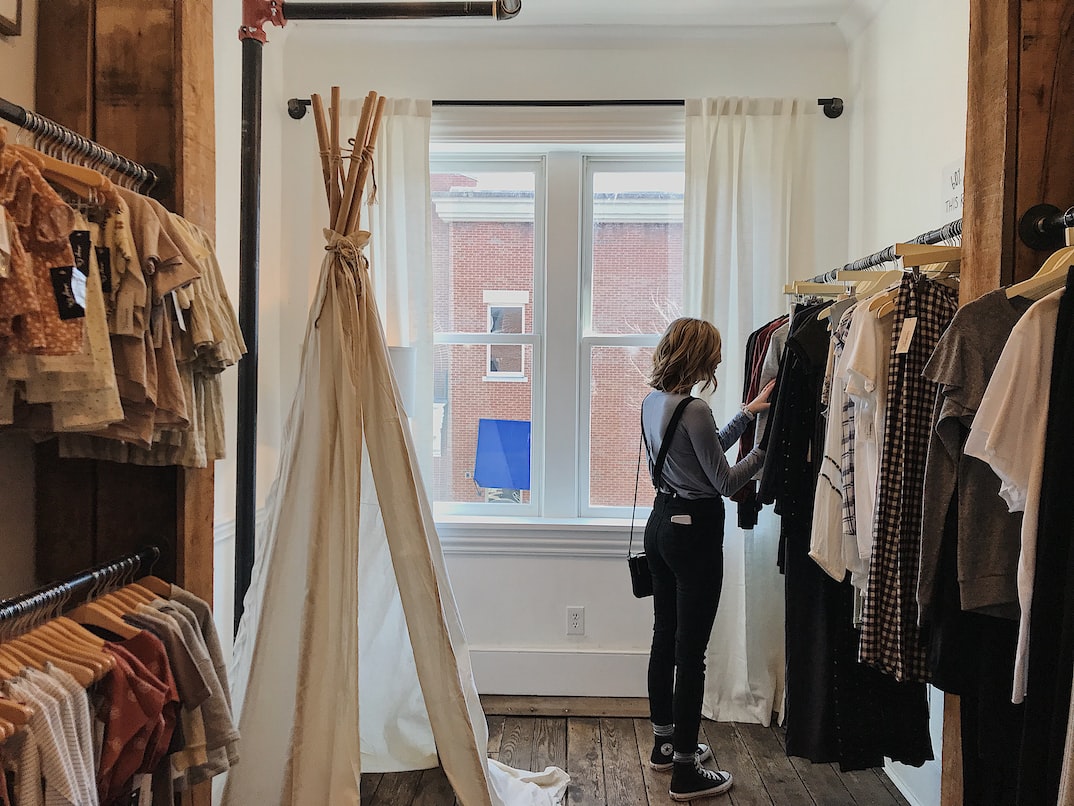A lot of pressure is placed on unsustainable brands to adopt ethical labor practices, use eco-friendly materials, end greenwashing, produce long-lasting designs, and, more importantly than ever, increase their transparency to close the information gap. As the environmental impact of fast-turnaround fashion takes center stage, more and more people seek eco-friendly alternatives for quickly-made and cheaply-sold clothing items and other additions to their houses.
Fast fashion’s practices and materials are linked to environmental impacts, making it one of the largest polluters worldwide. Sweatshop establishments, the exhaustion of non-renewable resources, and significant levels of greenhouse gases rank among the most disastrous ones, and they should be enough reason to call it quits with brands using unethical means.
Whether you are a devotee of sustainable brands or someone who cares about their environmental impact, know that you don’t have to sacrifice your wardrobe in order to minimize the strain on the environment. Addictions to fast fashion can be overcome. You can make a beneficial change in your closet and the world with the following tips on proactive actions to break the fast fashion habit.

Spot sustainable and slow-fashion brands
Many may use the terms “ethical, “sustainable,” and “slow” interchangeably when it comes to fashion since they’re basically different sides of the same story. However, it’s important to note several differences between them.
Slow fashion, as the name suggests, implies creating and offering high-quality pieces that pass the test of time and aren’t throwable after only one season of wearing. It emphasizes consumer shopping behavior and brand practices in its efforts to help minimize large-scale production and consumption. Several characteristics of a slow fashion house are low-impact materials like bamboo, durable garments, exhibition in small local stores, and a limited number of styles per collection that are only released a few times a year. On the other hand, sustainable fashion is all-inclusive and mindful of the materials and practices used and other extensive activities, like the distribution process.
If it seems challenging to sort through all the products available, you’ll quickly learn how to separate the bad from the good. When you are confused about whether a product is sustainable, remember that the label and packaging tell you everything you need to know at first sight. The details regarding the materials used must be listed on the label, and the packaging should use biodegradable or recycled materials that eliminate plastic. Also, some brands prioritize social responsibility and sustainability in their businesses. Green living is a great example in this regard, providing products and textiles certified with quality labels like GOTS and SAFE.
As you can see, a little attention to detail can be your best ally when turning your wardrobe into a more sustainable clothing selection. While these garments may be more expensive, their host of advantages are not to be overlooked, starting from the durability of the items to the quality of the materials.
Identify fast fashion brands
Putting a sustainability label on businesses can be a tricky undertaking. You can spot signs from a distance that an establishment cares about the environment. For instance, an eco-friendly corporation may incorporate numerous sustainable practices that range from relying on renewable energy to power their operations to using seeded paper in promotional products. But when it comes to fashion, you may need some thorough research and experience in the industry before concluding that a brand is good enough for you to become a client.
Generally, fast fashion brands should be easily identifiable by looking at several telltale signs. For example, they provide clothes made from lower-quality materials like rayon, nylon, polyester, spandex, and polyurethane. They regularly bring new arrivals depending on how styles and trends change and have a large supply. And probably among the biggest red flags are the meager prices. While the cost isn’t always the most reliable indicator of the quality of a garment, it can usually be a sign of a fast-fashion company if its products are mass-produced and sold almost for free.
Stop buying dull clothes
One of the unparalleled advantages of slow fashion is that it is the key to creating outfits that emphasize your style and individuality. This happens because they provide variety, few items, and less accessibility. A wide selection of inexpensive clothes can harm the uniqueness and personal sense of style, and many fail to realize that fast-paced fashion can compromise the wearer’s individuality. Following similar trends can make developing a distinctive and specific fashion statement hard.
With such huge availability of cheap items, you’re likely tempted to get a lot of stuff on a whim. However, remember that you can look more than fashionable while protecting the environment – you’re developing a personal sense of style that expresses your identity and reflects your sense of style.
Put an end to waste accumulation
The average individual dumps around 81 pounds of clothes yearly, adding to clothing waste. At the end of the day, it all accumulates in landfills, which pollutes the environment, given the high carbon emissions released. And most of the time, the clothes thrown could find their home in other wearers’ closets or be repurposed. As such, there are three ways to stop waste accumulation and ensure your clothes aren’t thrown before they’re used to their full capacity.
You can sell slightly or donate slightly used clothes or set up a clothing swap. Items you’ve only worn once or a few times can be given to donation organizations or put on marketplaces.
Giving away pre-loved items will help you declutter crampy spaces and ensure someone else enjoys the things that no longer serve you any purpose.
Final take
The world is growing increasingly aware of the dangers and toll that fast fashion takes on the environment, which isn’t notorious only for the emissions produced, but also for the poor and unsustainable labor practices. The affordability of fast fashion clothing drives quick sales but at the cost of the health of the environment and your efforts to replace garments that deteriorate after several wears.



